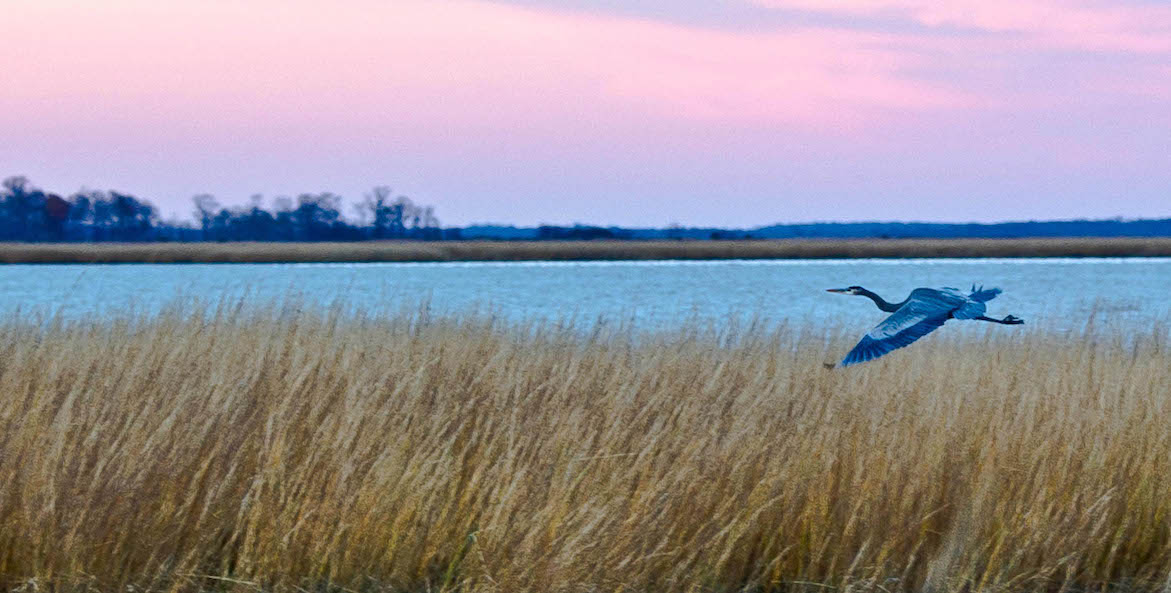December 10, 2024: State, federal, and local leaders from around the Chesapeake Bay watershed met today and pledged to, by the end of 2025, update the 2014 Chesapeake Bay Agreement to clean up the Chesapeake Bay. Read press release
Despite tremendous clean water progress across the Chesapeake Bay watershed, restoration efforts will not meet the nutrient pollution-reduction goals set under the Chesapeake Clean Water Blueprint by 2025. This historic plan was established in 2010 to restore the Bay and its rivers and streams.
But 2025 is a deadline—not a finish line. State and federal governments are still legally required to meet Blueprint pollution reductions and sustain them over the long term. And the Blueprint is working:
- Oyster restoration efforts are on track to restore 11 Bay tributaries by 2025.
- Monitoring data shows reductions in nutrient pollution in the past 10 years, despite population growth and more intense storms due to climate change.
- As part of a settlement agreement, EPA has committed to taking action to reduce pollution in Pennsylvania. The settlement follows a lawsuit CBF and partners brought against EPA for its failure to require Pennsylvania to develop a plan to meet its Blueprint commitments, as well as a similar suit by Virginia, Maryland, Delaware, and the District of Columbia.
How the Blueprint Came to Be
In 2010, CBF and our co-plaintiffs settled a lawsuit with the Environmental Protection Agency (EPA) that included a Clean Water Act provision called the Chesapeake Bay Total Maximum Daily Load or TMDL, which provides science-based, enforceable limits on the amount of pollution entering the Chesapeake in order to remove the Bay from the federal "dirty waters" list.
In addition to the settlement, the six Bay states and the District of Columbia agreed to develop individual plans and milestones to achieve those limits by 2025, and EPA committed to holding them accountable and imposing consequences for failure if necessary.
Together, the limits, plans, milestones, and consequences make up the Chesapeake Clean Water Blueprint.
What Will the Blueprint Do?
If fully implemented, the Chesapeake Clean Water Blueprint will ensure pollution reductions in the Chesapeake Bay that will lead to the "fishable, swimmable" waters promised by the Clean Water Act of 1972. The Blueprint does three things:
- ensures everyone shares in the responsibility for cleaning up our waterways;
- sets two-year, incremental pollution-reduction goals—known as milestones—to keep progress on track; and
- imposes consequences for failure, ensuring states and localities will meet their responsibilities.
Clean water is critical to the health, outdoor heritage, and quality of life of communities throughout the watershed. The steps needed to clean up not only the Bay—but also local rivers and streams—will support local businesses, create jobs, and provide additional environmental benefits. A peer-reviewed economic report estimated the economic value of implementing the practices that will result in a restored Chesapeake Bay will produce natural benefits of more than $22 billion annually.
What Needs to Happen Next
State and federal leaders across the region must come together in person and publicly recommit to a healthy and productive Chesapeake Bay. The best time to do this is at the next Executive Council meeting in December 2024. The council must take the lessons learned from the past 40 years to solidify a plan for Bay restoration and resiliency post-2025.
It is time for Bay restoration to adapt. Since the signing of the Bay agreement 10 years ago, science has shown that some approaches are not working or could work much better. This is not failure, but refusing to use what we’ve learned would be. The next phase of Bay cleanup will require significant change and strong leadership, while remaining grounded in what has enabled success so far: science, accountability, and partnerships.
How You Can Help
The Bay's problems have been identified; we have the know-how and tools to fix them; and the health, economic, and quality of life benefits of a restored Chesapeake Bay outweigh cleanup costs. If we work together to make the Blueprint work, many scientists believe the Bay and its rivers and streams will reach a tipping point when improvements outpace pollution and the Bay rebounds exponentially.
It's critically important that citizens get involved. And it's not too hard.
- If you haven't already, join CBF's Action Network to receive e-mails regarding actions you can take to save the Bay.
- Tell your federal, state, and local representatives that clean water is important to you and urge them to support Bay-friendly legislation and oppose legislation that would derail our clean water efforts.
- Write a letter of support to the editor of your local newspaper.
- Attend a public meeting of local governing bodies.
- Walk the walk. Reduce pollution from your home, back yard, school, or business.




